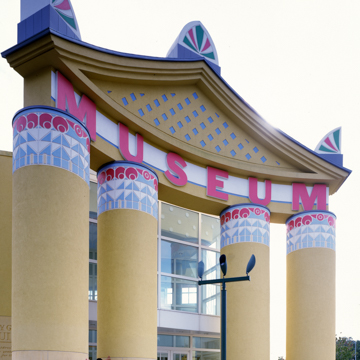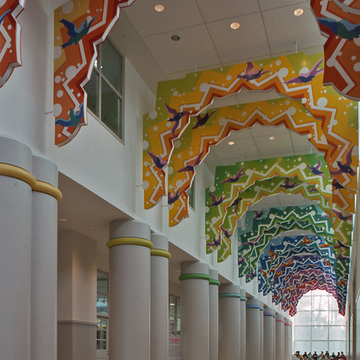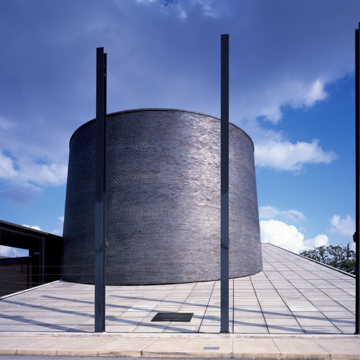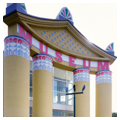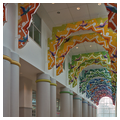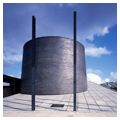Philadelphia architects Robert Venturi, Denise Scott Brown, and Steven Izenour identified the “decorated shed” as a quintessential contemporary American building type in their polemical writings of the 1970s. Their design of the Children's Museum of Houston derives its energy from the contradiction between its expedient construction as a pre-engineered metal building and its aspiration to high cultural status, encoded in its mock classical entrance portal and the “Caryakids,” the figural cutouts supporting the bus drop-off canopy along Labranch Street. Along the axial lobby spanned by polychromed archways, the museum's interior galleries are straightforward, providing neutral backdrops for various installations. In 2007, the museum's back building, part of the original complex, was demolished to facilitate an addition to the primary building.
The Children's Museum was the first of several small cultural institutions to build economical buildings in the 1990s in the Hermann Park and Southmore additions. Of these other institutions, the most architecturally ambitious are the Holocaust Museum Houston (1996) by Ralph Appelbaum Associates of New York City and Mark S. Mucasey of Houston at 5401 Caroline Street; the Clayton Library Center for Genealogical Research, occupying the former William L. Clayton House of 1917 by Birdsall P. Briscoe at 5300 Caroline Street, restored in 2010 by Glassman Shoemake Maldonado, with landscape architects Asakura Robinson; and the Asia Society Texas Center (2012) at 1370 Southmore Avenue by Tokyo architect Yoshio Taniguchi and Associates and Kendall/Heaton Associates of 2011. At 4949 Caroline Street is Covenant Baptist Church of 2000 by Natalye Appel and Associates and Rogers+Labarthe.





















